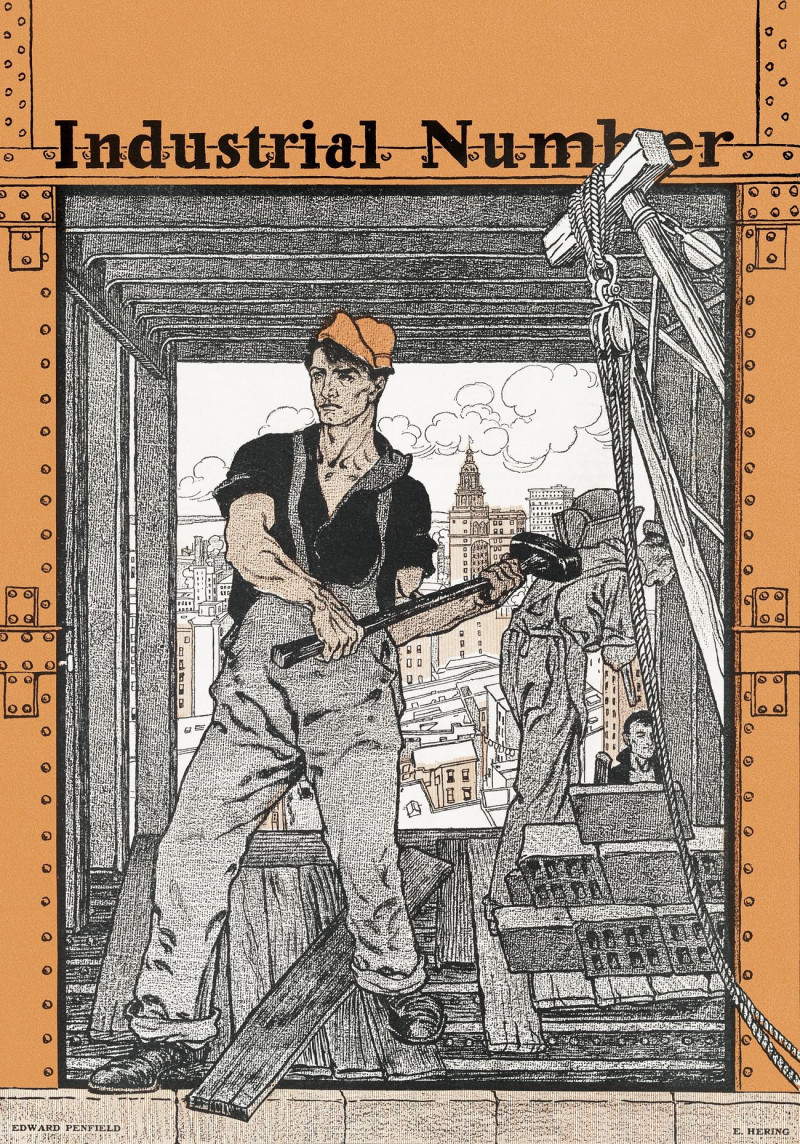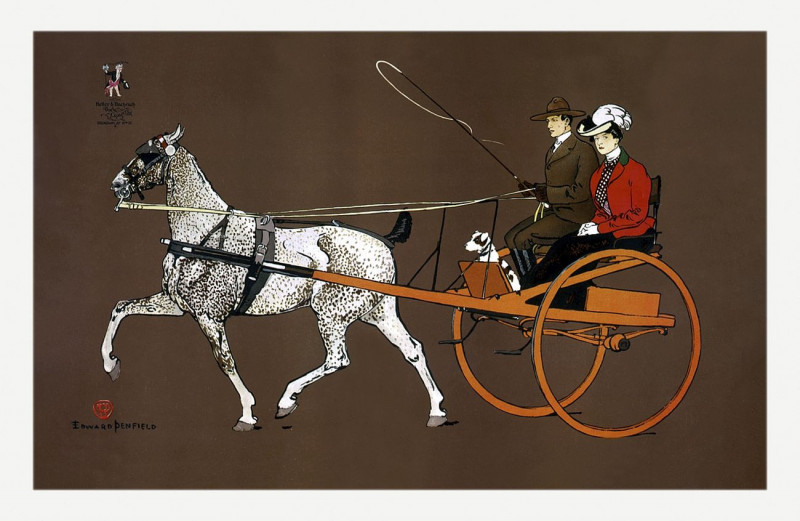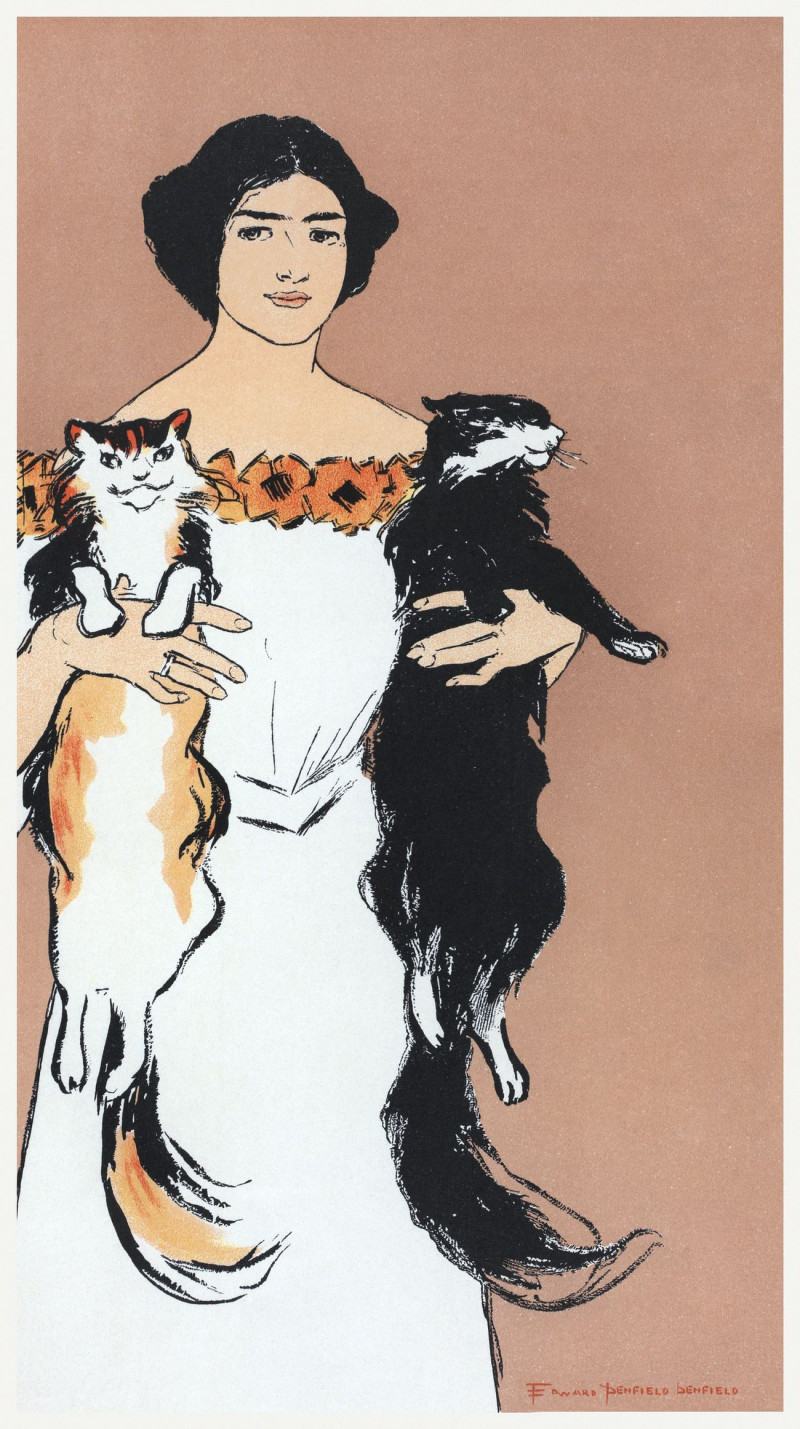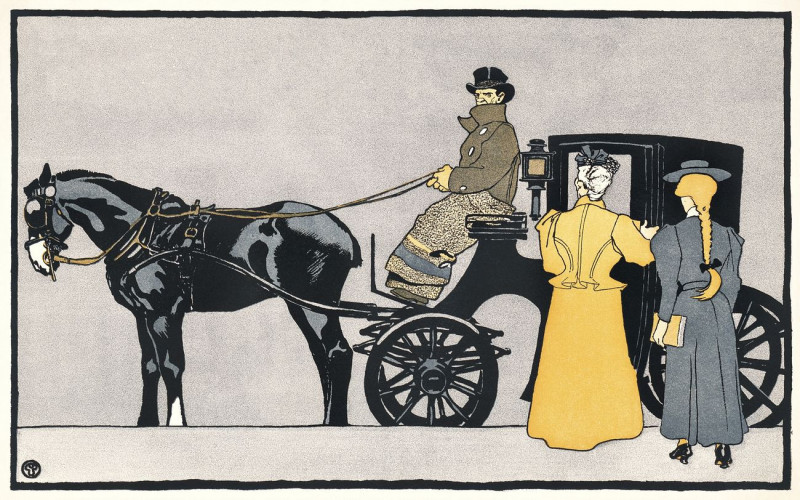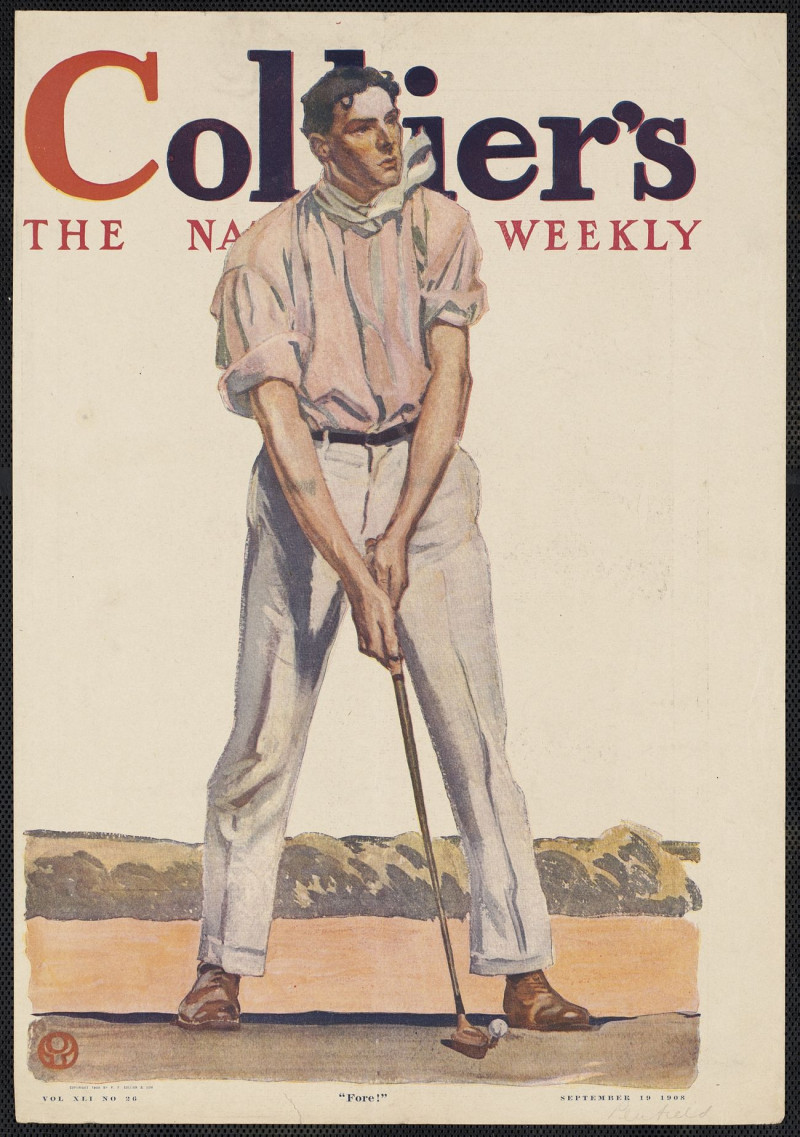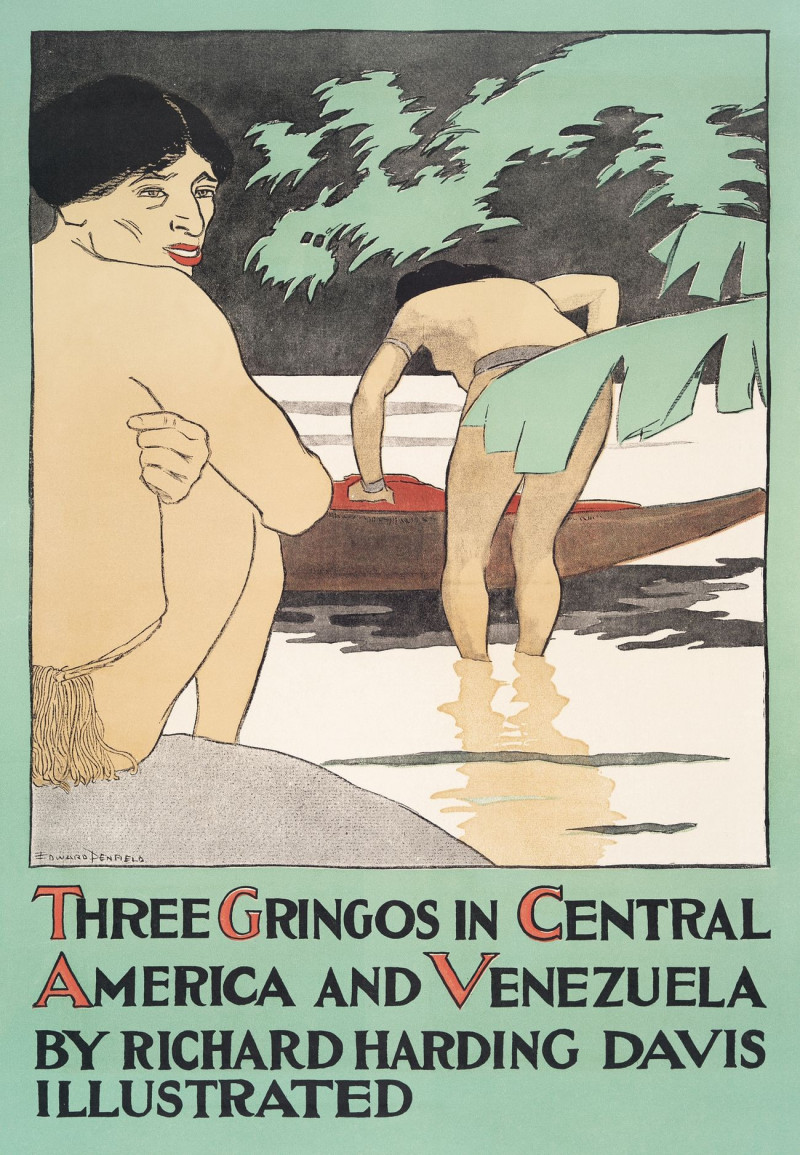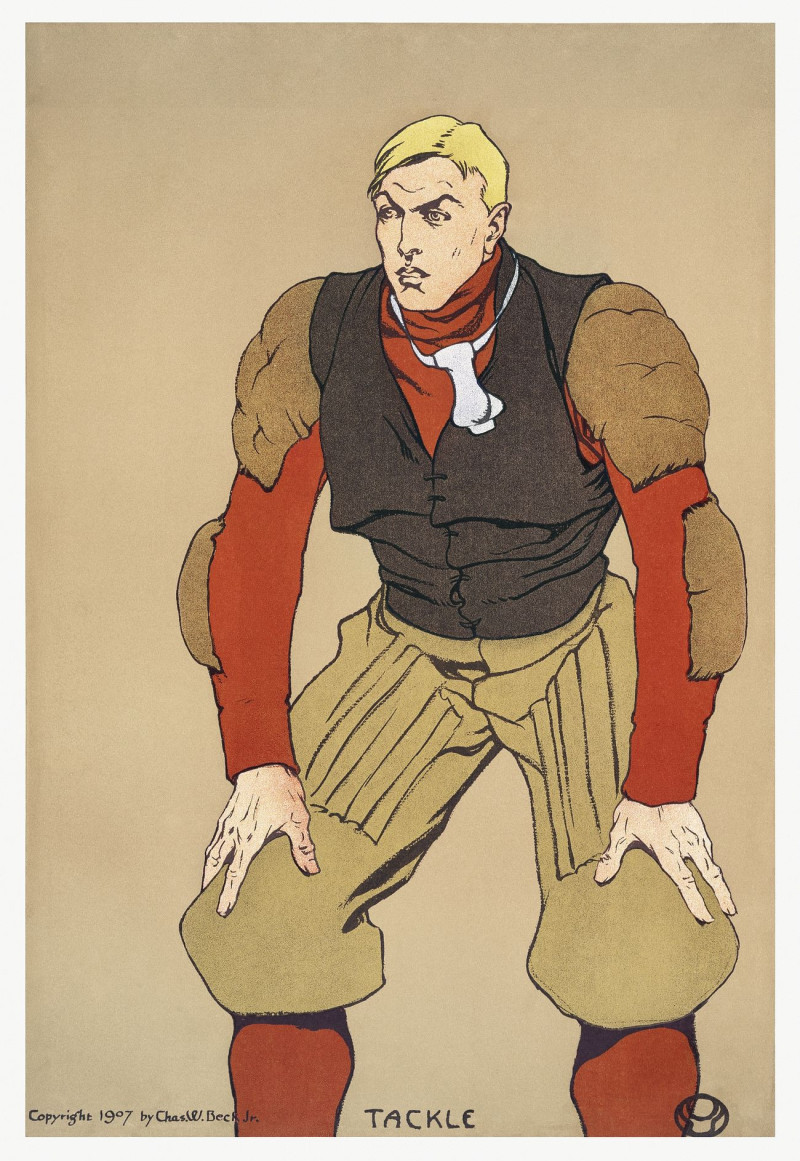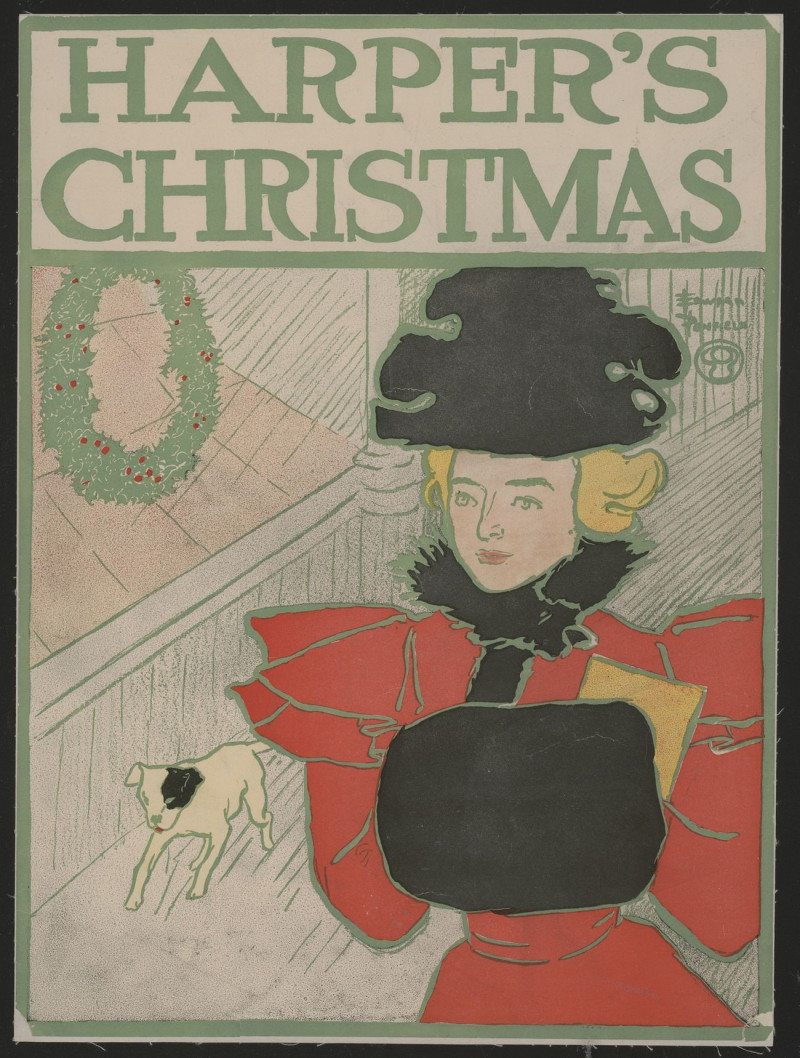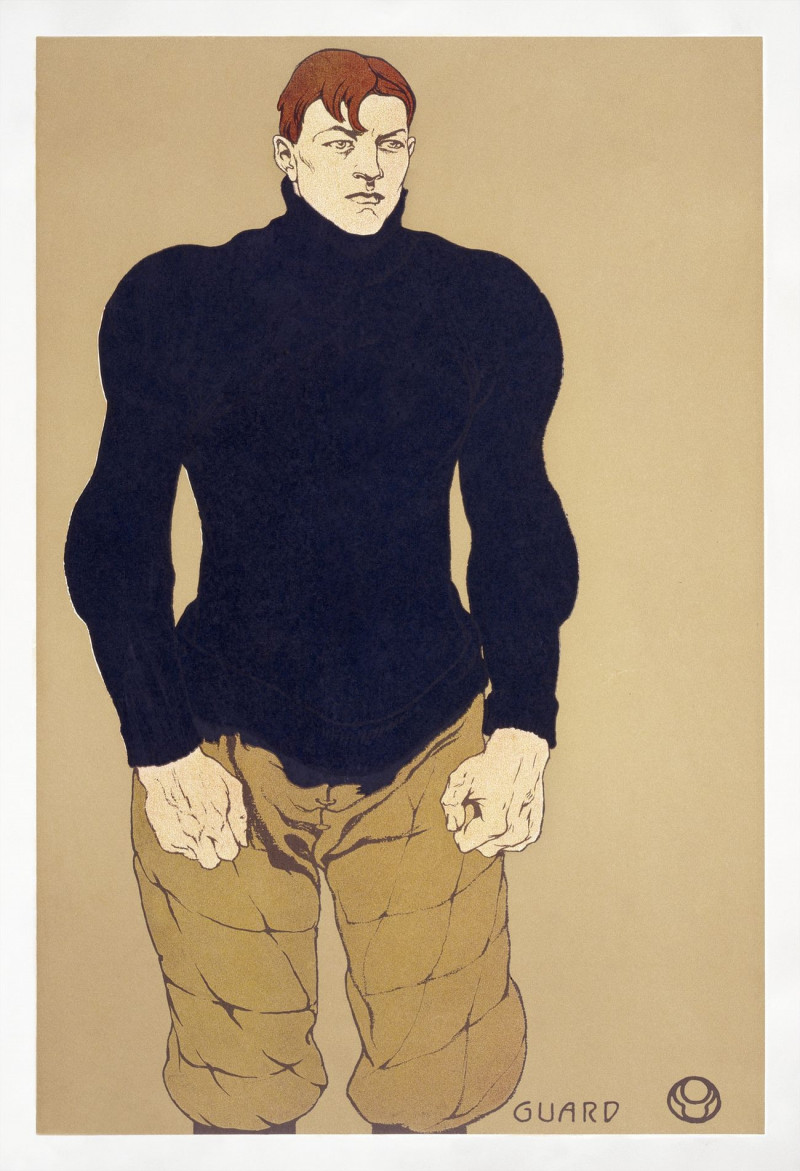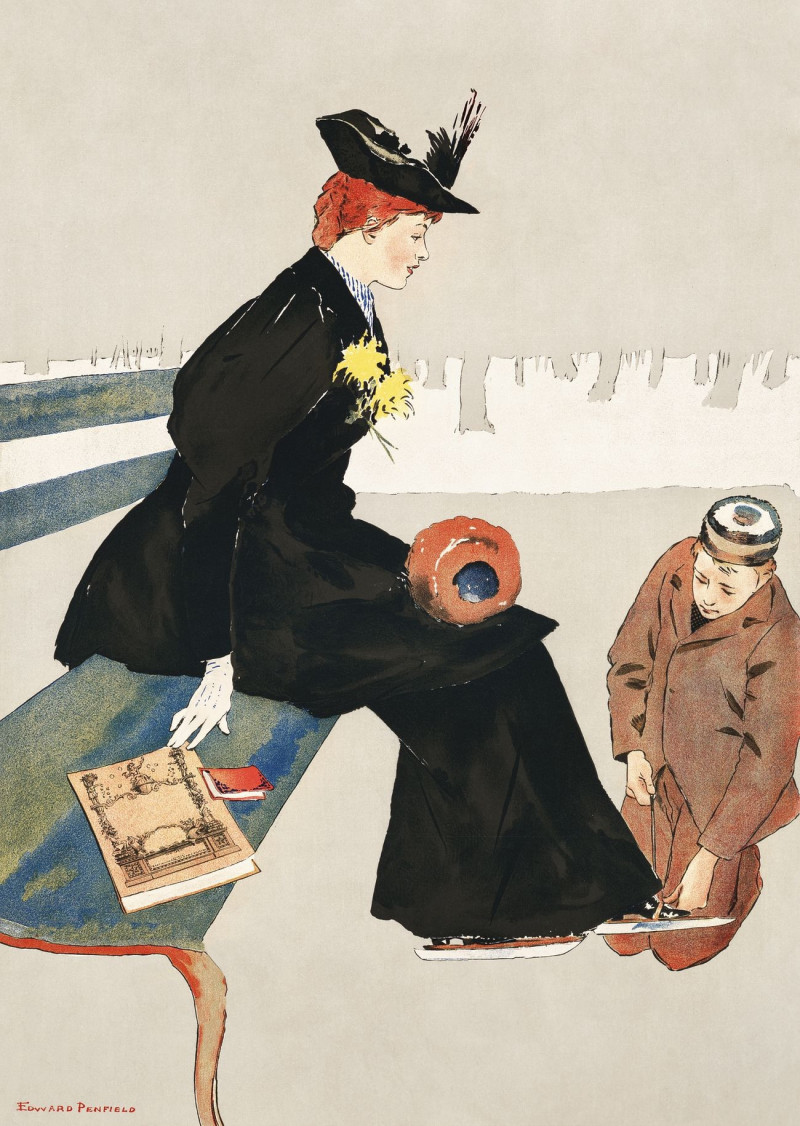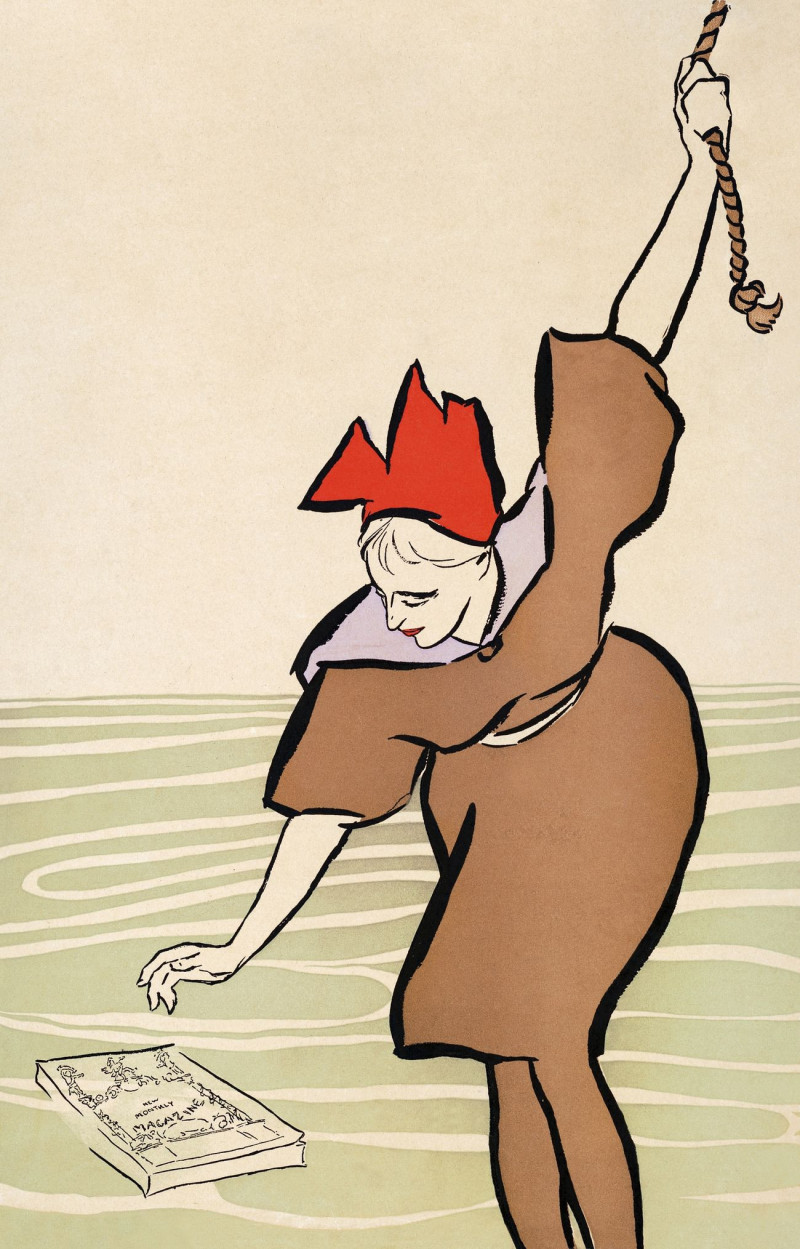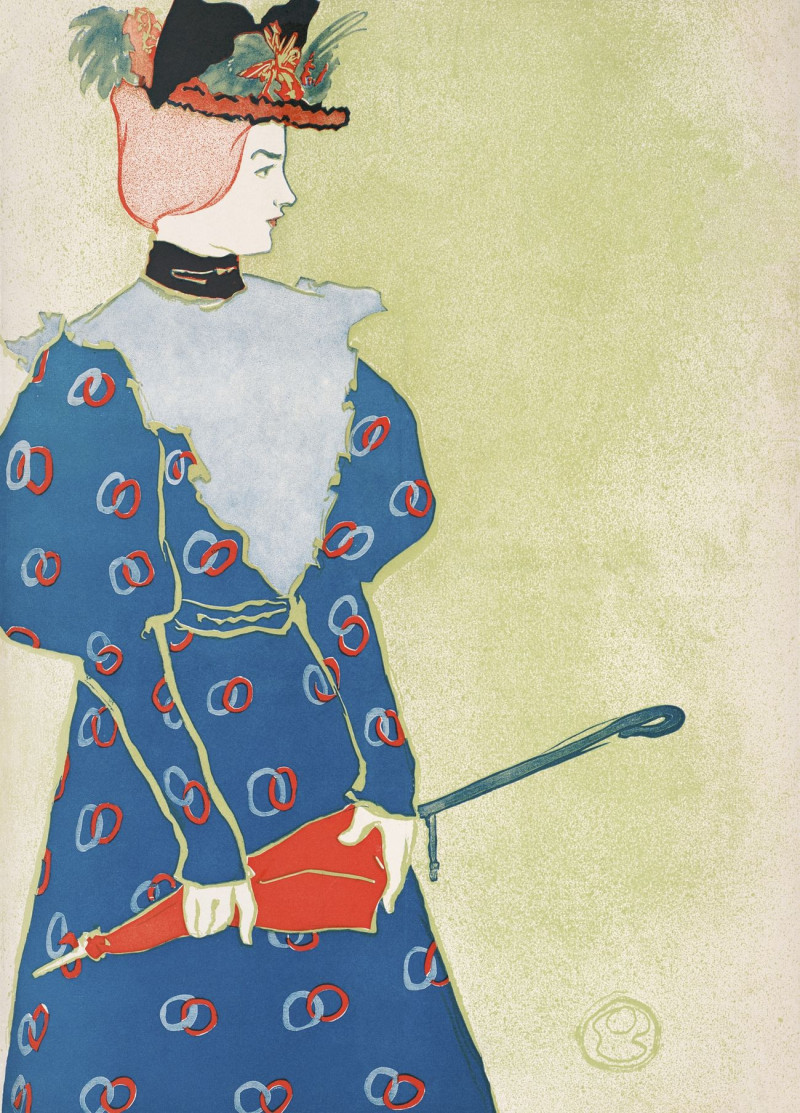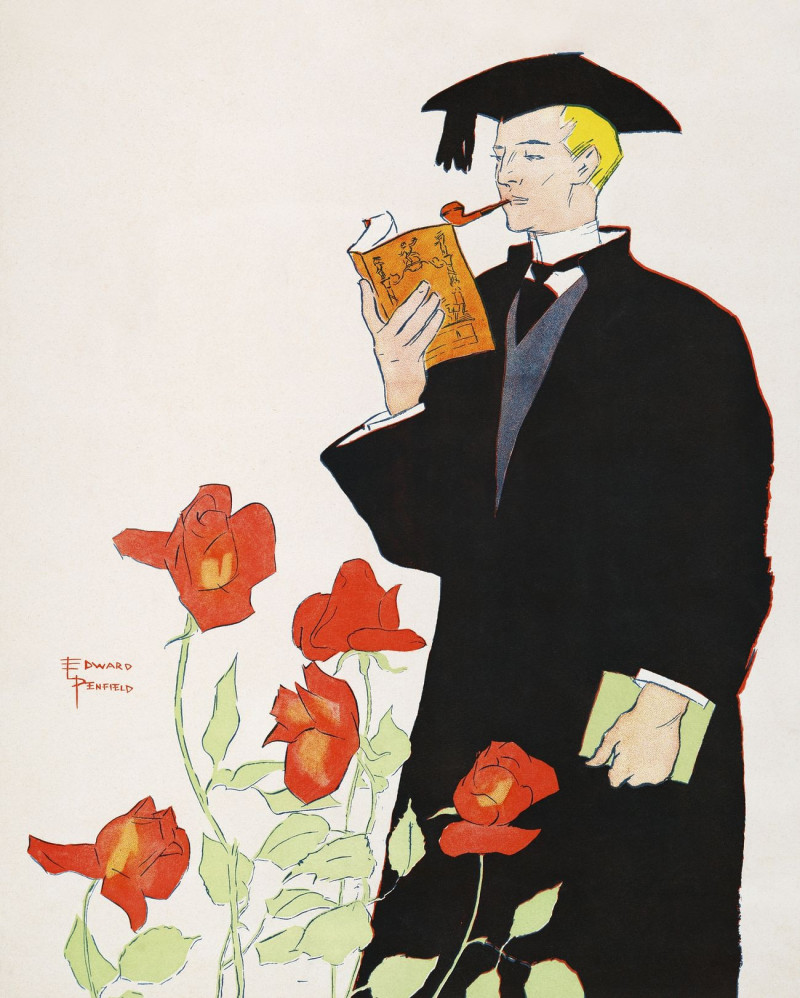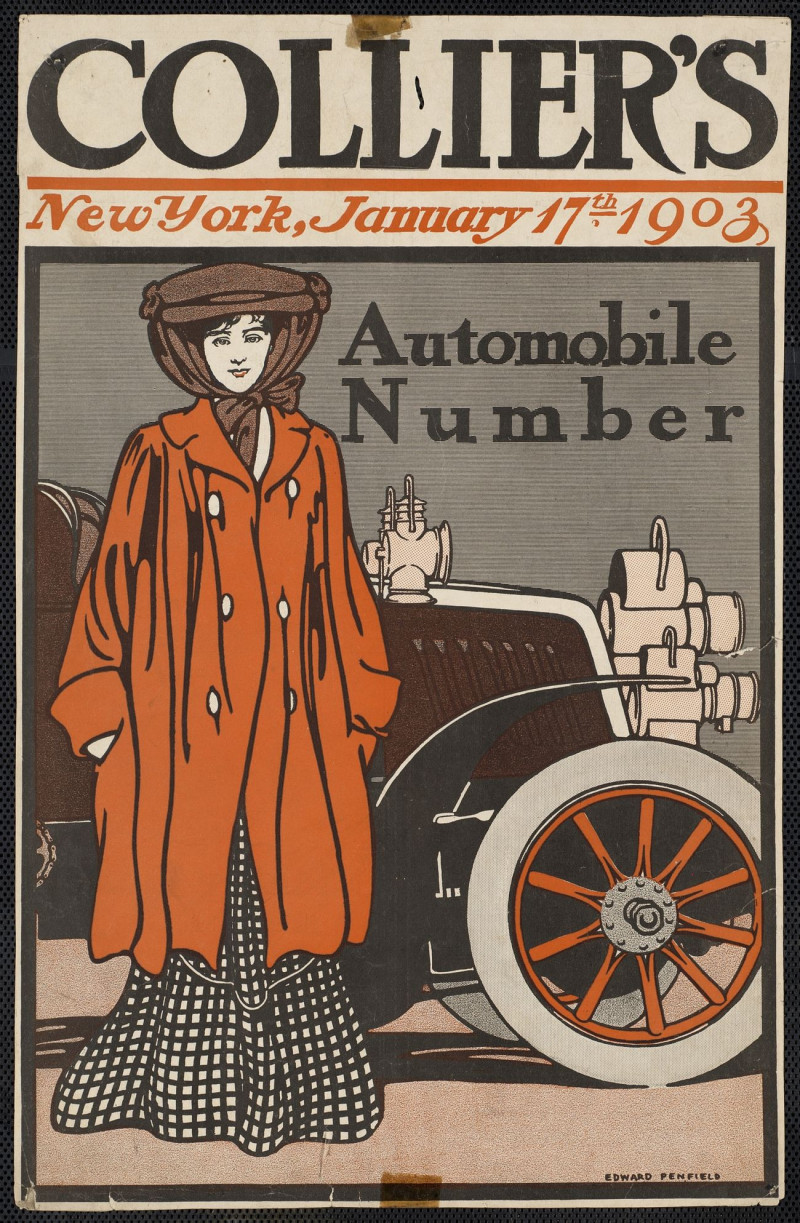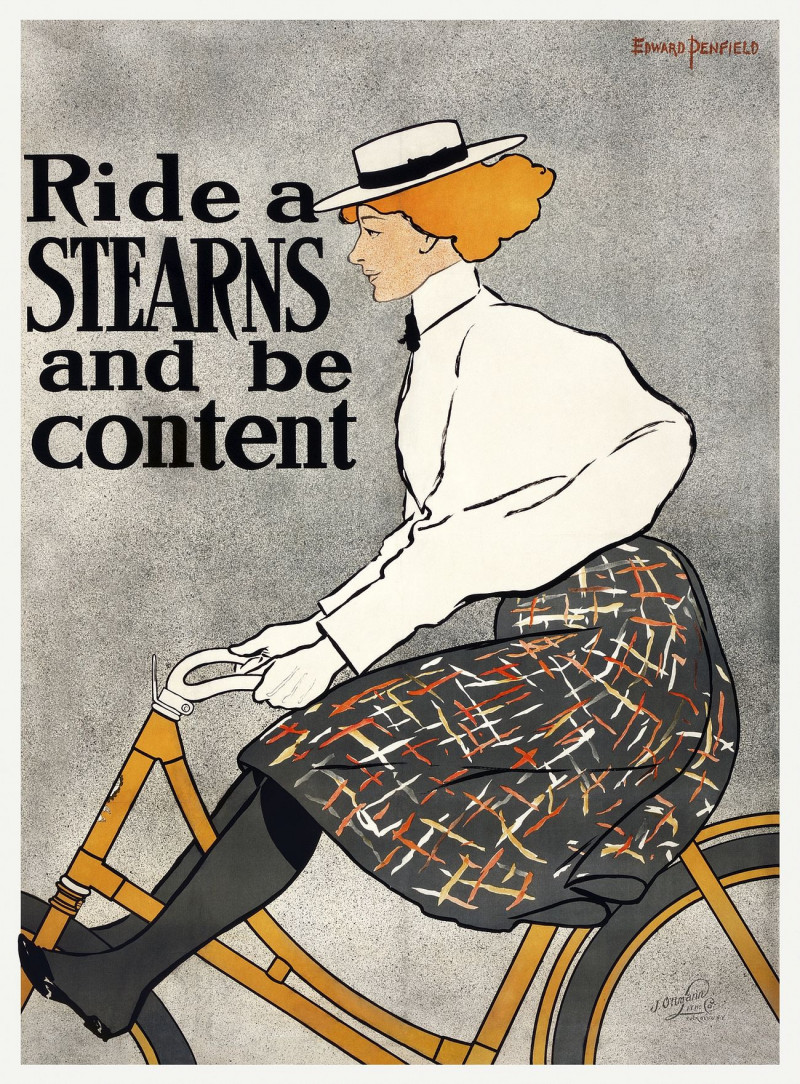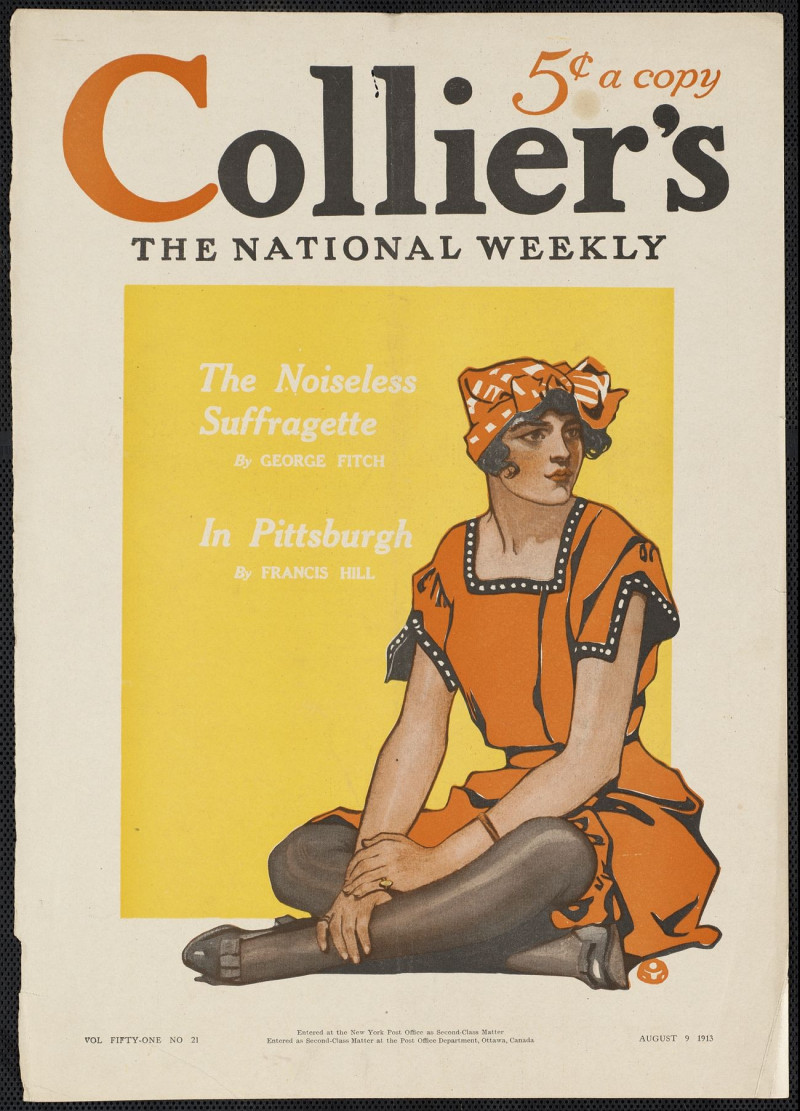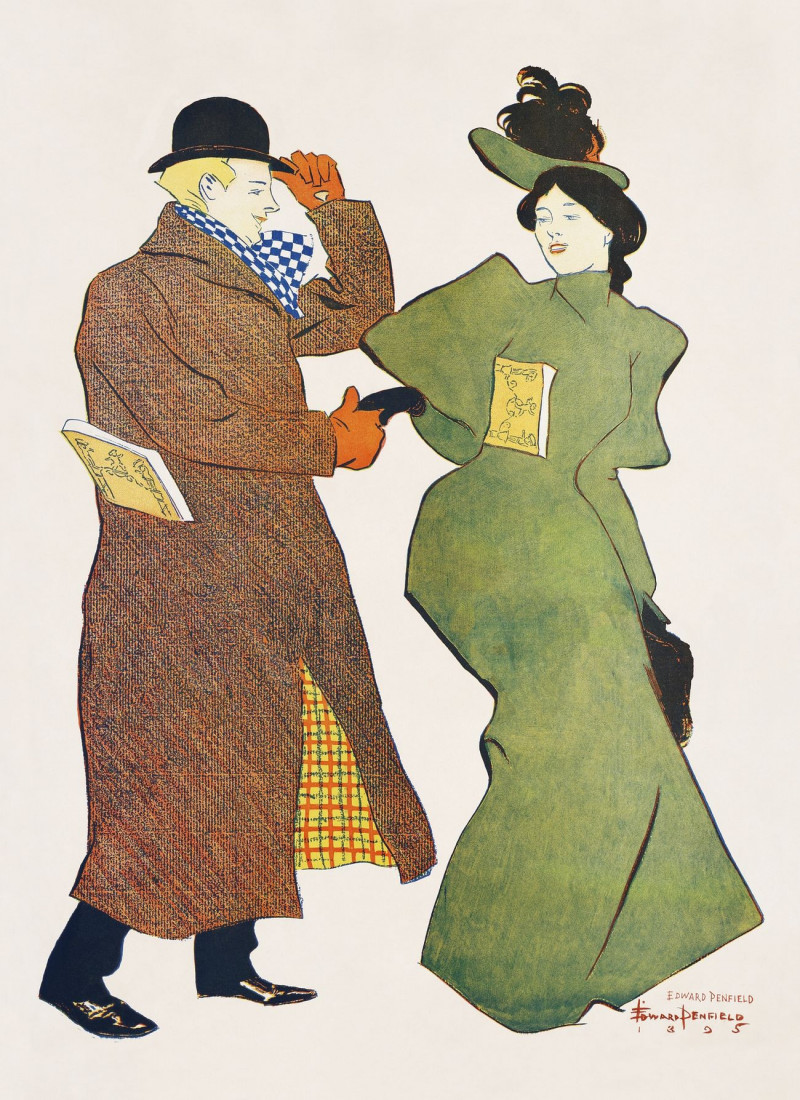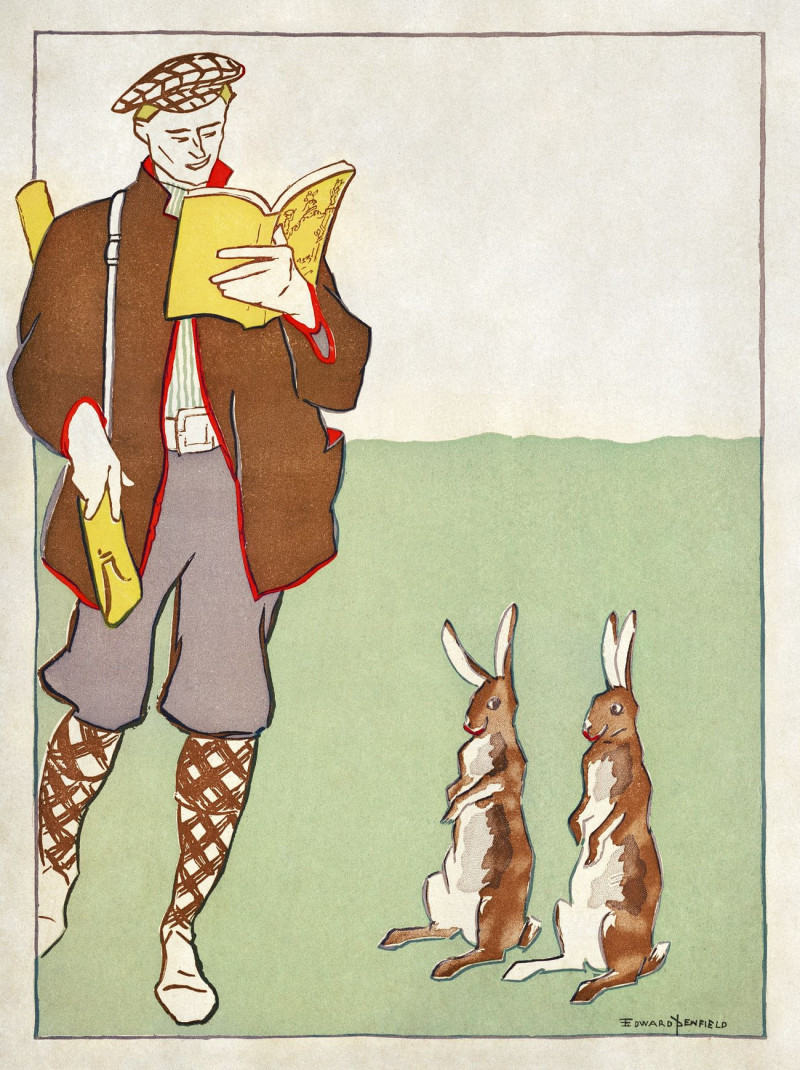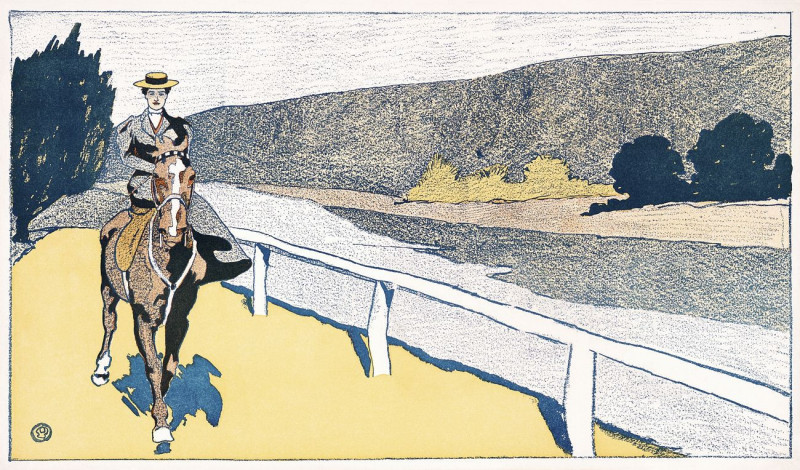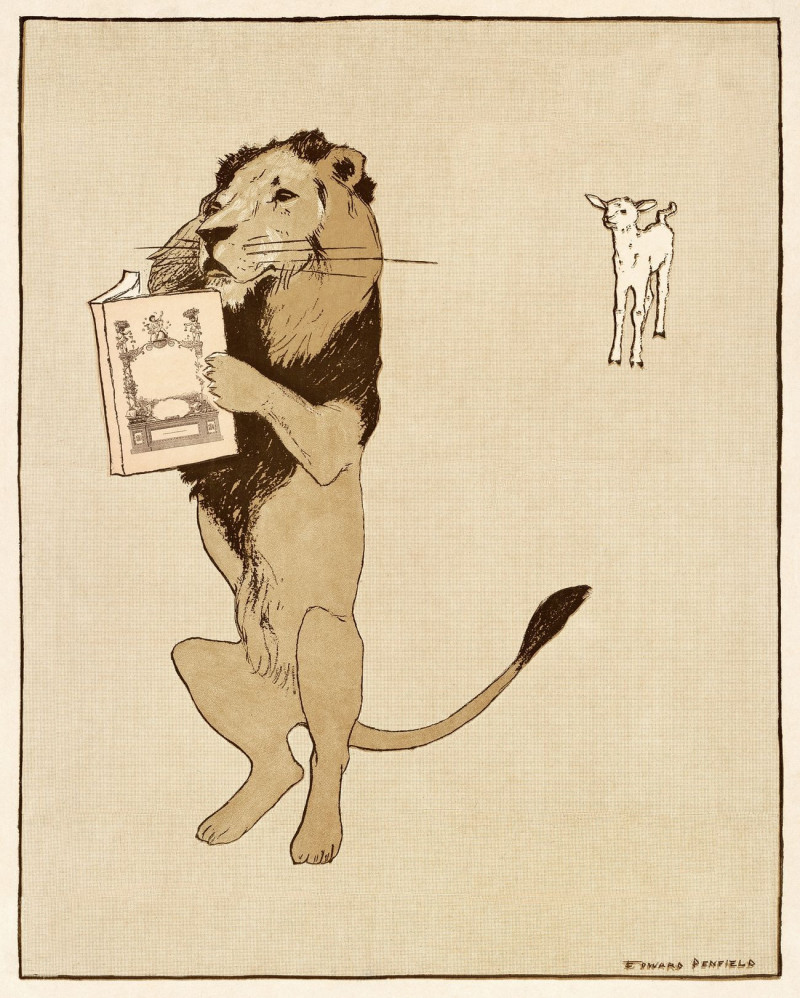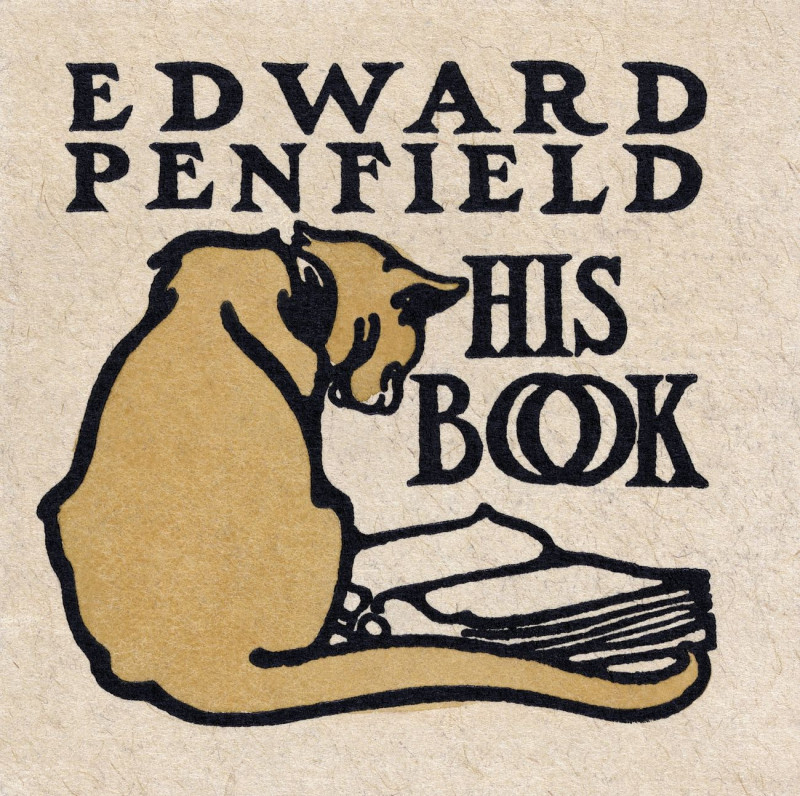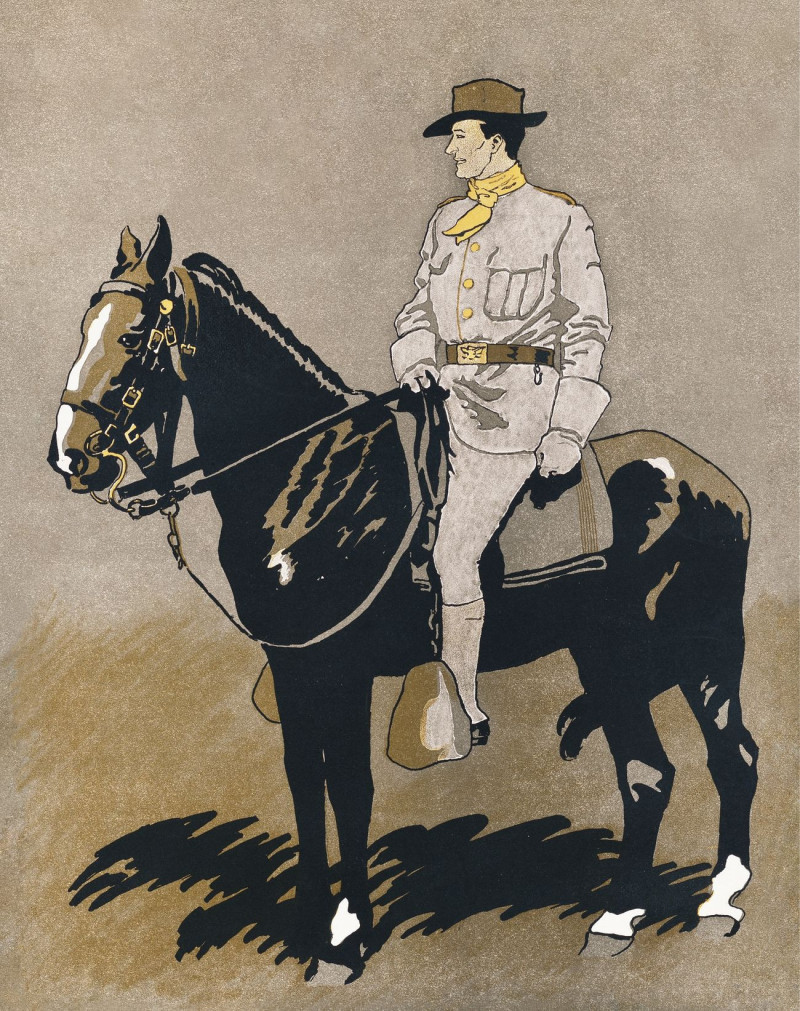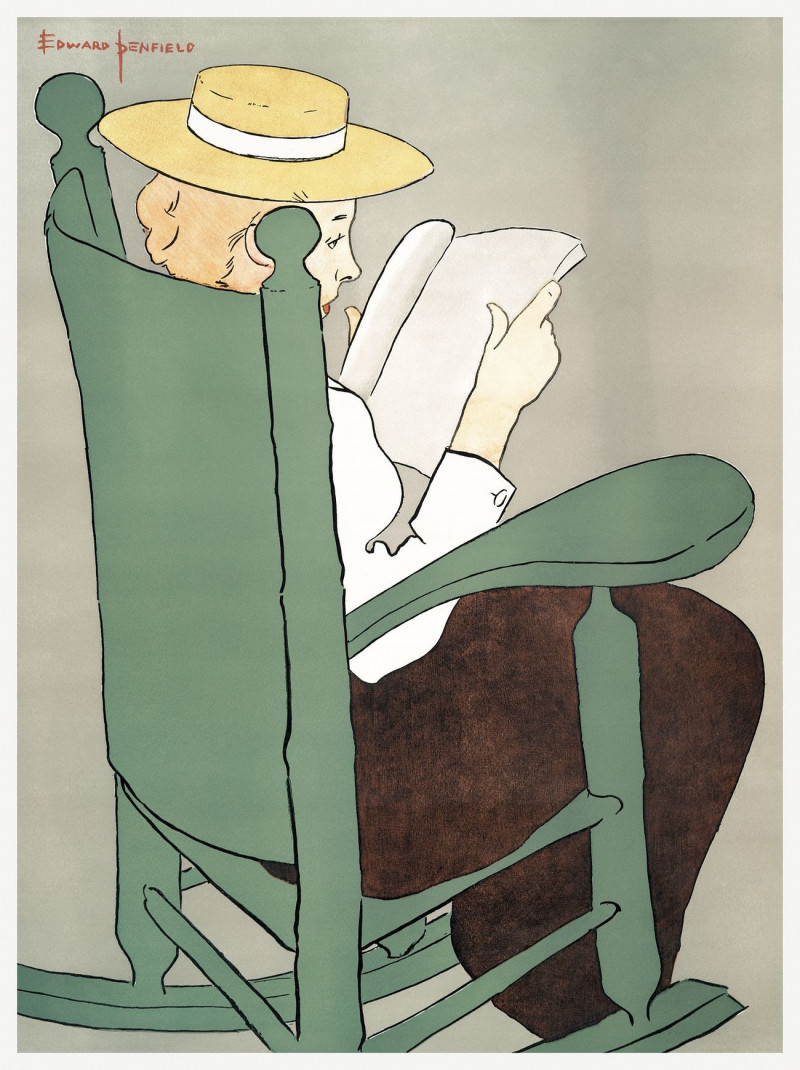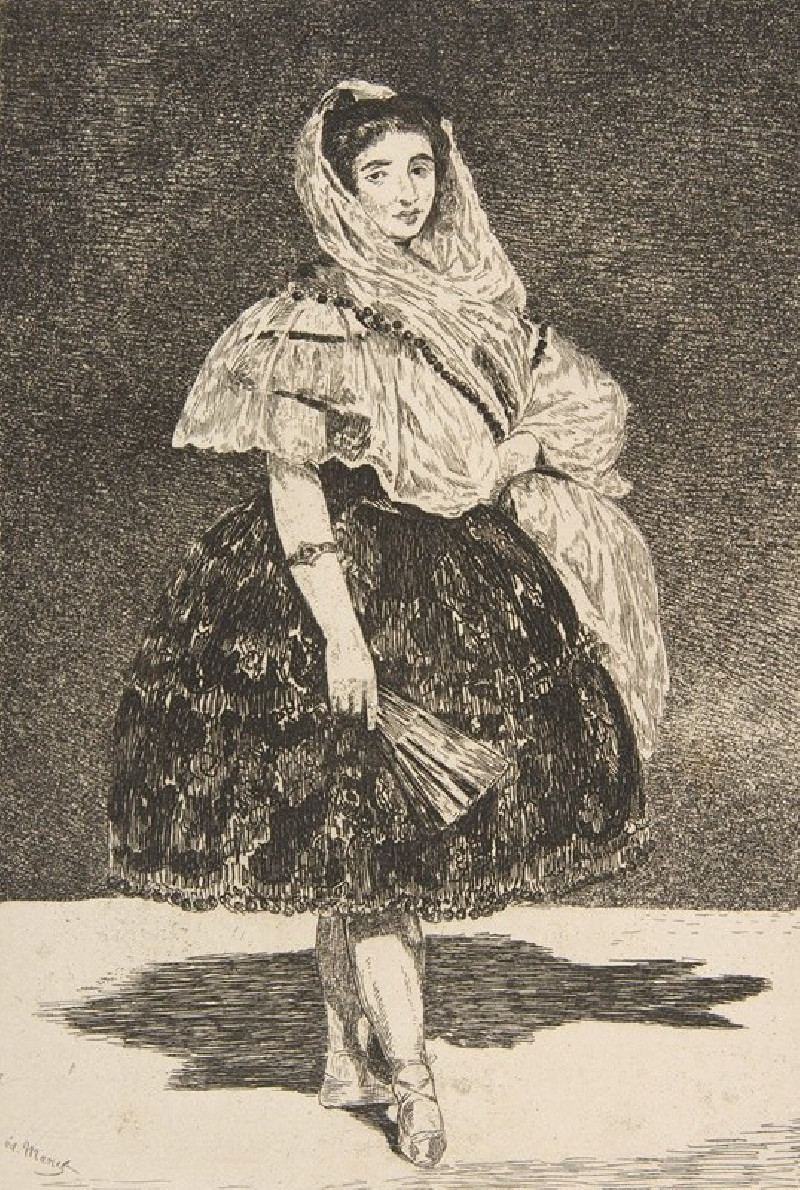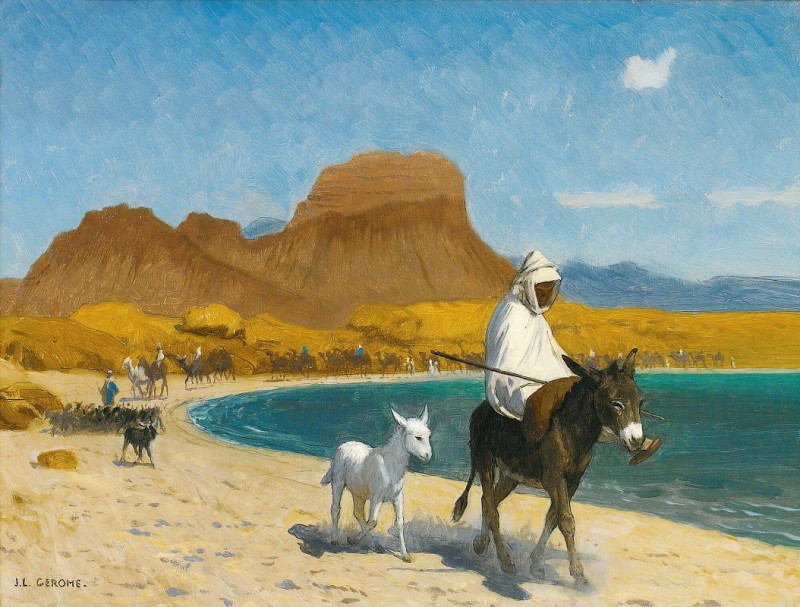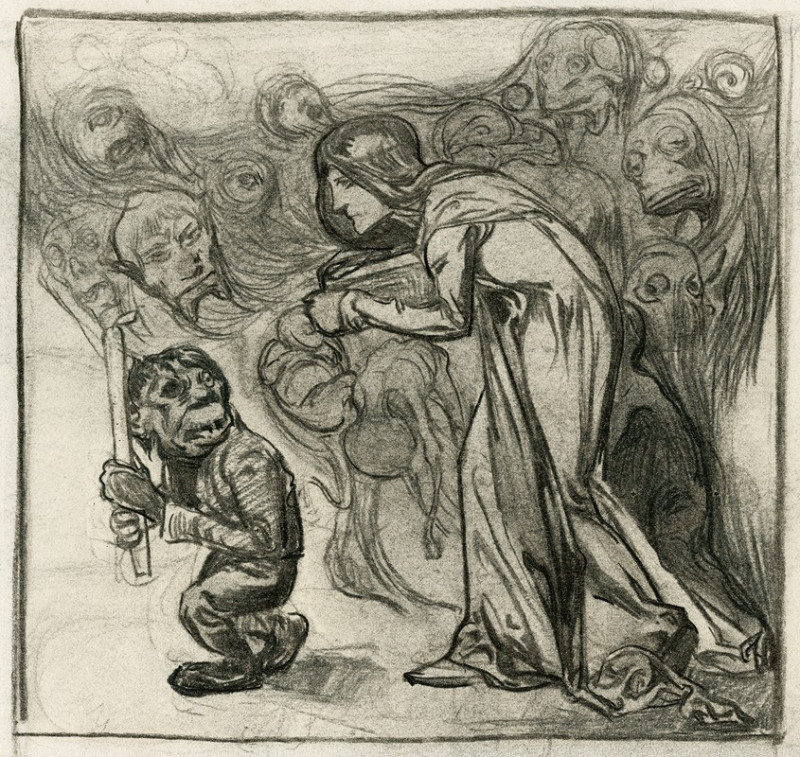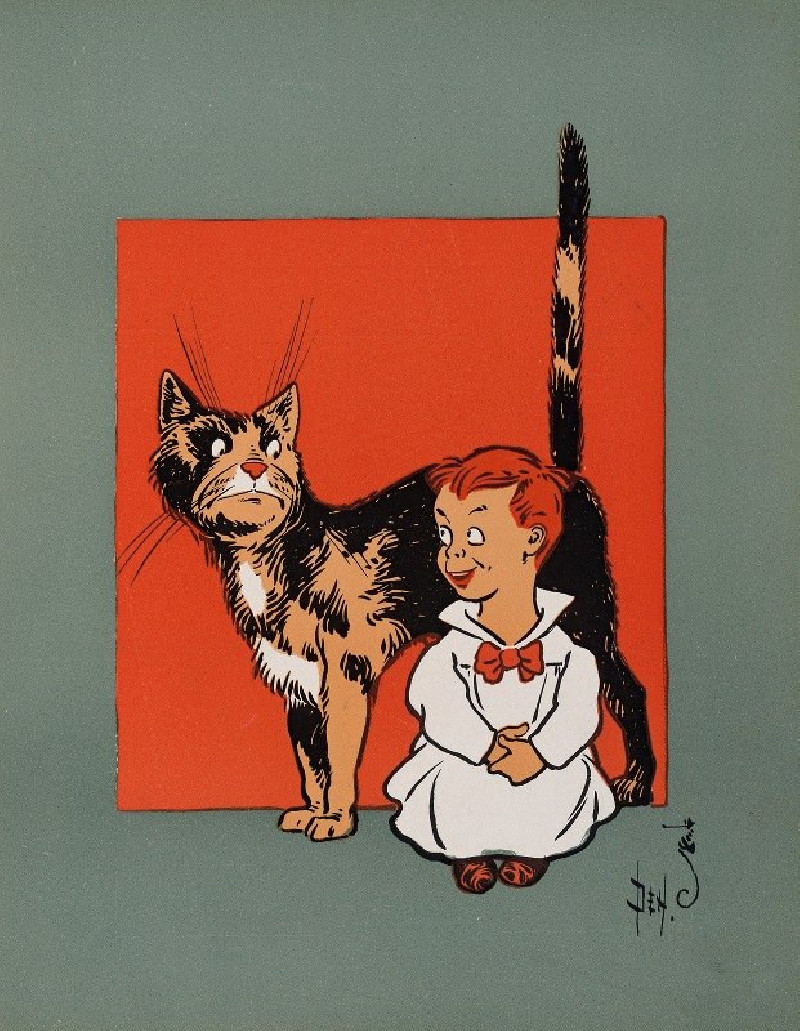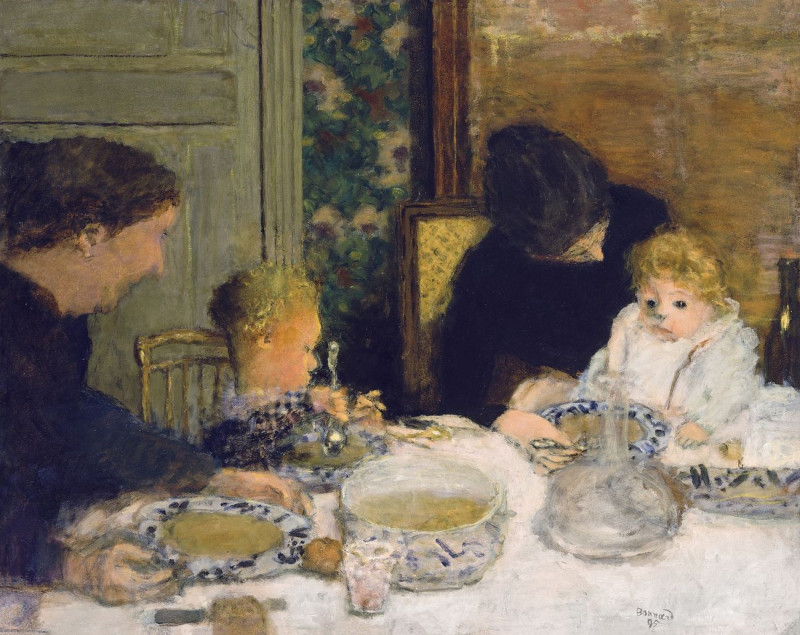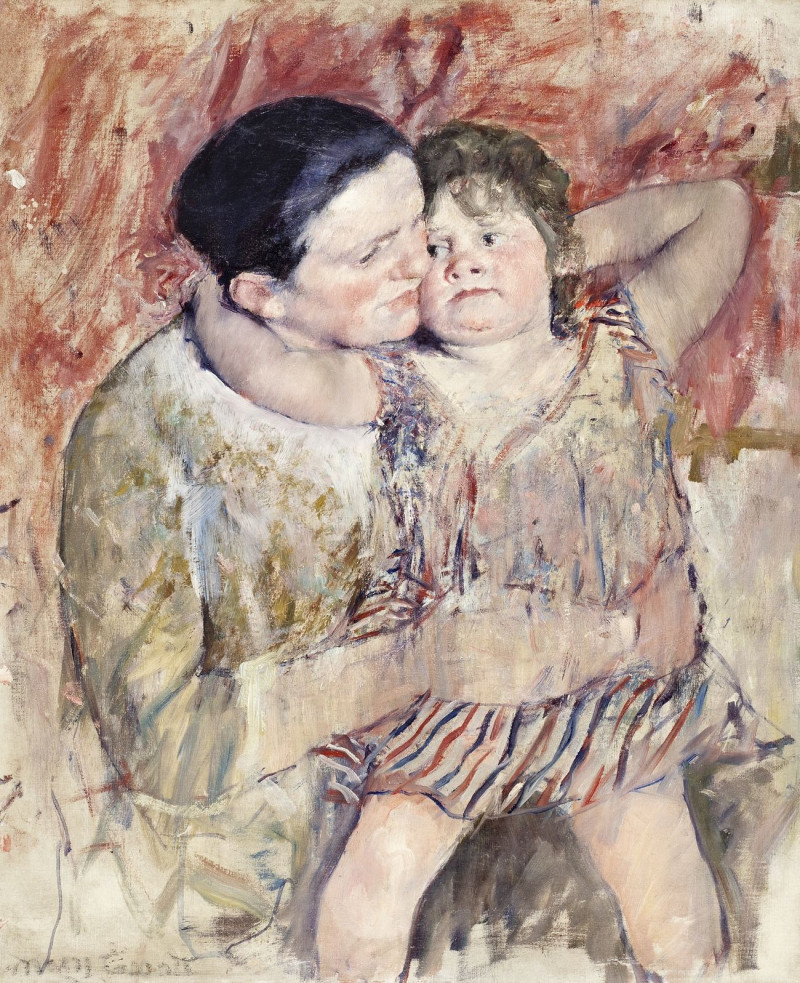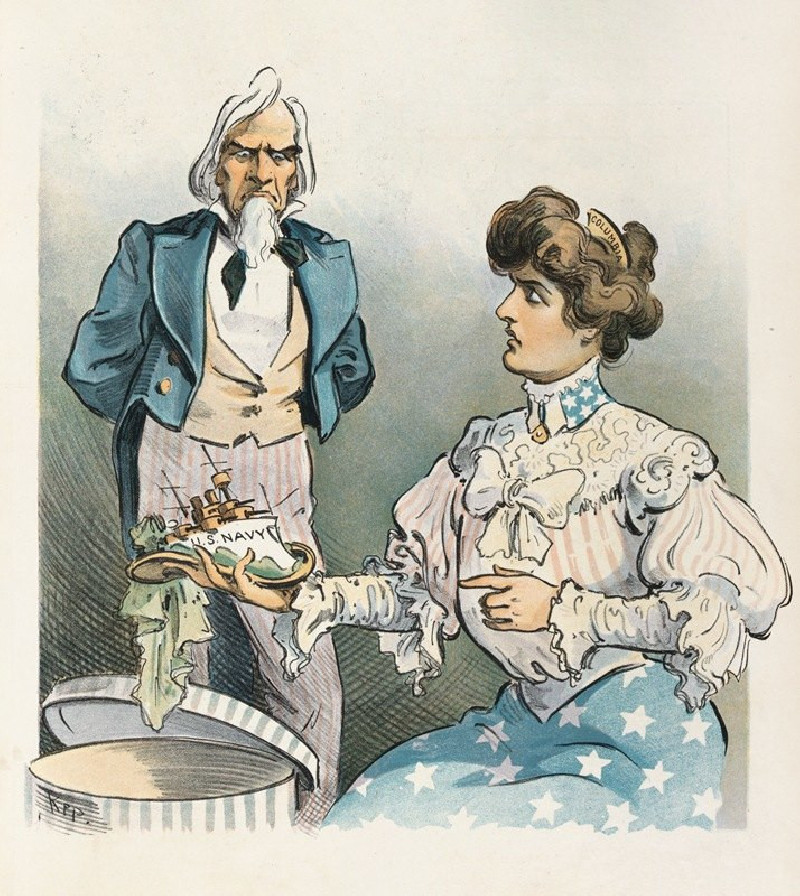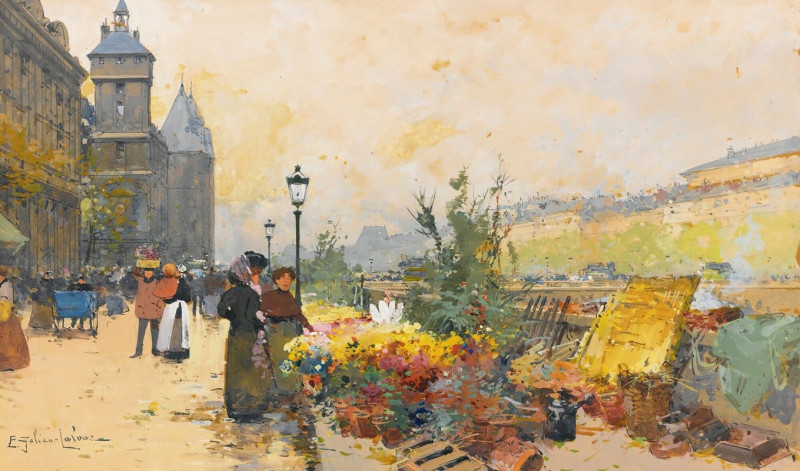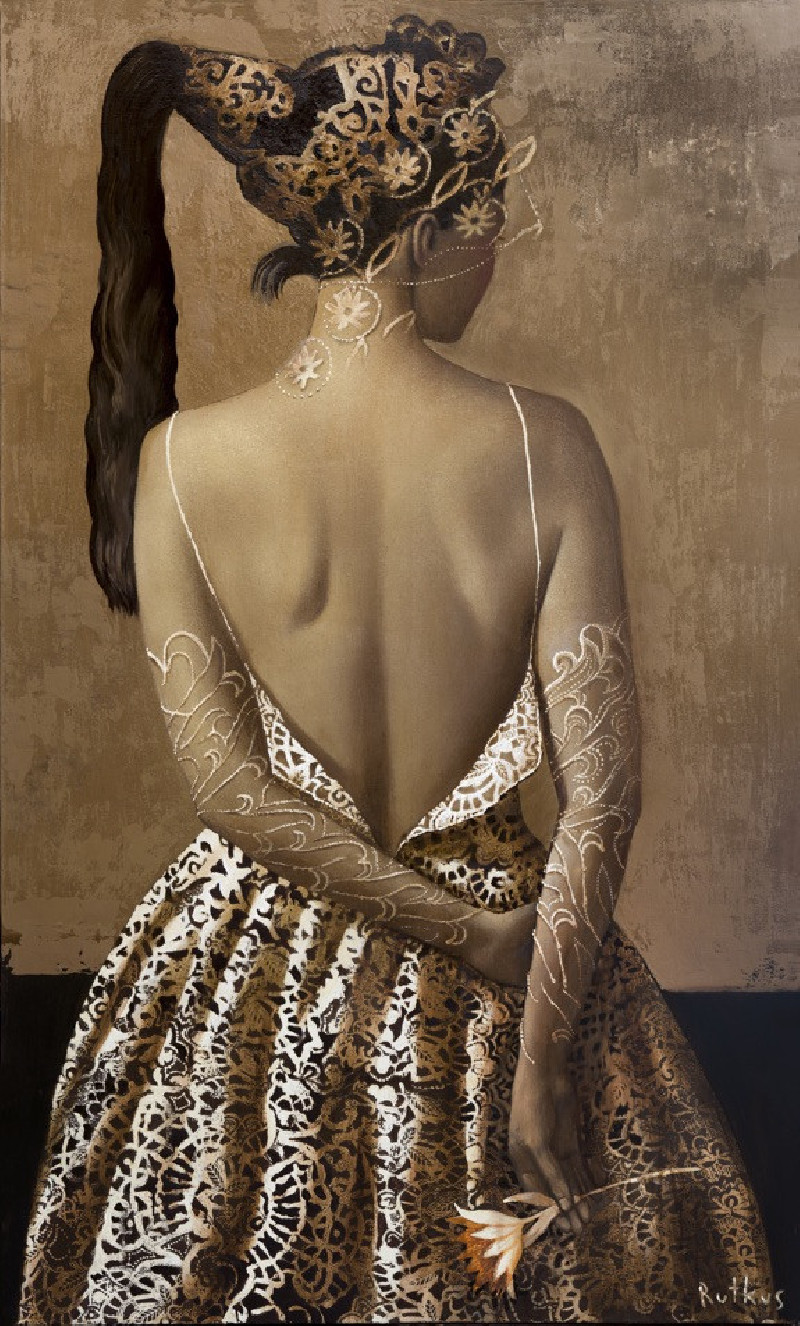Labour Day Number
Technique: Giclée quality print
Recommended by our customers
More about this artwork
The painting "Labour Day Number" by Edward Penfield is an evocative representation of industrial workers, highlighting several distinct types of labor. Each character in the image stands for different branches of the workforce, emphasizing the diversity and importance of each role in the economy of Penfield's time.On the left side of the painting, you'll notice a shirtless man with a muscular physique, holding a shovel and coiled wire or rope. This figure is a representation of manual labor, particularly in fields like construction or mining, symbolizing physical strength and endurance. Next to him, there is another worker wearing a cap, equipped with what appears to be a mining lamp and pickaxe, further emphasizing labor in mining industries.In the center, a young man dressed in a patterned jacket represents a more casual or possibly supervisory role. His attire contrasts sharply with the physical labor suggested by the other figures, possibly indicating a role that is less physically demanding.On the right side of the image, the man in a shirt with rolled-up sleeves and overalls holding a hammer signifies skilled labor, such as carpentry or craftsmanship. Beside him, another worker in protective overalls holds books under his arm, representing the educational or technical aspects of labor that involve learning and applying knowledge, perhaps in engineering or other technical professions.The bold red background binds these figures together, giving a unifying backdrop that symbolizes passion, energy, and the vital bloodline of the workforce.
Delivery
Returns
Edward Penfield (1866-1925) was an influential American poster artist, considered as the father of the American poster movement. He was employed as an art editor for Harper’s Weekly, Monthly, and Harper’s Bazaar, where he made posters advertising each issue of the magazine for over seven years. His art was avant-garde with less concern for the dramatic curving lines of Art Nouveau, inspired by Japanese ukiyo-e block prints, figure drawings by Henri de Toulouse-Lautrec, color lithographies by Jules Chéret, and other contemporary artists. He created simplified scenes of daily life in saturated colors, including horses, cats, sports, and women’s fashion.




